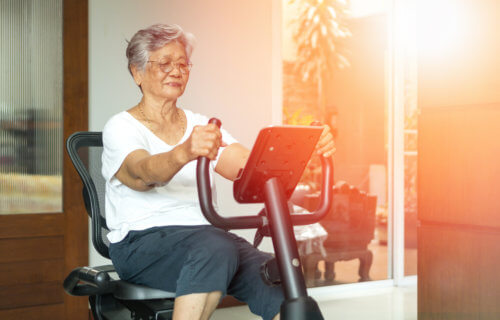BERN, Switzerland — Sensors that record people’s movement at home could help detect the onset of diseases in older adults, a new study suggests. Such a device would be useful for adults who prefer to live at home by themselves instead of at a nursing home, while still feeling monitored for potential health issues. Researchers from the University of Bern say movement patterns can reveal age-related conditions such as a weakening heart and even dementia.
“We used non-contact sensors at home to create an extensive collection of digital measures that capture broad parts of daily life, behavior and physiology, in order to identify health risks of older people at an early stage,” explains postdoctoral researcher and lead study author Dr. Narayan Schütz in a university release.
Studies have connected a slowdown or decrease in strength with more falls, mild cognitive impairment, sleep problems, and more. In older adults, the sensor picks up different movement patterns that could identify the early signs of Alzheimer’s, Parkinson’s, and heart disease. If found early, people may be able to get treatment sooner, and the movement data provided by the sensor could pave the way for personalized treatment and drug plans.
Health-monitoring sensors could be on the refrigerator, front door
The study authors collected 1,268 health parameters with non-interaction sensors to capture common movement patterns among older adults. They then placed a contactless motion sensor in each room such as under the mattress, on the front door, and on the fridge. The sensors were all connected to a base station that would take in motion data and inform relatives or an alarm center if there was a problem or emergency. For example, the motion sensor would send out an alert if it did not detect the person returning to bed at night.
“We were able to show that such a systems approach–in contrast to the common use of a few health metrics – allows to detect age-relevant health problems such as cognitive impairment, fall risk or frailty surprisingly well,” says co-author Tobias Nef, professor of gerontechnology and rehabilitation at the ARTORG Center at the University of Bern.
One of the benefits of using a sensor instead of a wearable device is that older adults did not have to interact with it. Older adults over 80 seem to prefer a zero-interaction system, as previous work from the team found using mobile devices too complicated and inconvenient. Some had issues with these interactive devices because of dexterity or cognitive problems. Another appealing feature of the device among older adults is that they give people a high degree of privacy.
“To ensure privacy and data protection on a technical level, the highest Swiss and European medical data security standards are applied,” adds Schütz.
None of the sensors recorded sound or video and installation of the device was voluntary.
“Such a system marks a milestone in early detection of worsening health for seniors living alone into old age. We assume that it can make a significant contribution to enabling older people to live at home for as long as possible by delaying hospital admissions and transfers to nursing institutions or, in the best case, even avoiding them,” says Hugo Saner, a professor emeritus of cardiology of the University of Bern and Bern University Hospital and co-senior study author.
The study is published in npj Digital Medicine.

